Built to Be Crashed: How Michael Mann’s ‘Ferrari’ Created Its Vintage Race Cars
- Oops!Something went wrong.Please try again later.
- Oops!Something went wrong.Please try again later.
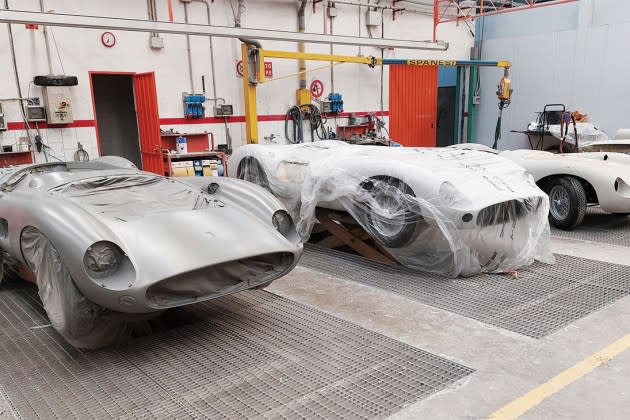
What do you do when you need more than half a dozen classic 1950s-era Ferrari and Maserati race cars to make a film, but the originals today would sell at auction for $30 million or $40 million each? If you’re Ferrari director Michael Mann, you build them from scratch, of course, with historically faithful details to make even the most strident car lover grin with approval.
The film, which stars Adam Driver as Ferrari founder and racer Enzo Ferrari, re-creates the 1957 Mille Miglia, the famous 1,000-kilometer Italian road race that ran from Brescia, through the Futa Pass, onto Rome and back to Brescia.
More from The Hollywood Reporter
'Oppenheimer,' 'Killers of the Flower Moon,' 'Ferrari' Among Cinema Audio Society Award Nominees
Jimmy Kimmel Slams "Ignorant" Aaron Rodgers During Seven-Minute On-Air Rant After Epstein Flap
The production design of Ferrari was exacting: Everything was scrupulously studied, detailed and, eventually, reproduced for the film — from the signage on the Mille Miglia starting ramp in Brescia to the wheel lugs of a Ferrari 801 F1 car, on down to pasta company Buitoni’s logo on the reproduction of a Maserati 450S race car.
“My friend Gianluigi Longinotti-Buitoni [former CEO of Ferrari North America] was involved in the everyday of making this movie — his family had sponsored the Maserati that raced in 1957, which is why it says Buitoni on the car,” Mann tells THR. “We wanted to be that accurate.”
The director’s level of involvement in the film’s design extended to picking the exact red paint colors for the cars. Rita Campana, whose vehicle restoration firm Campana Onorio created the bodywork for many of the classic Ferrari and Maserati race cars seen in the film, “sent over sample after sample after sample of reds,” recalls Mann. “Then I decided I wanted to have about 20 percent semigloss because I didn’t want to distract with hot reflections and I wanted the paint to be slightly dulled.”
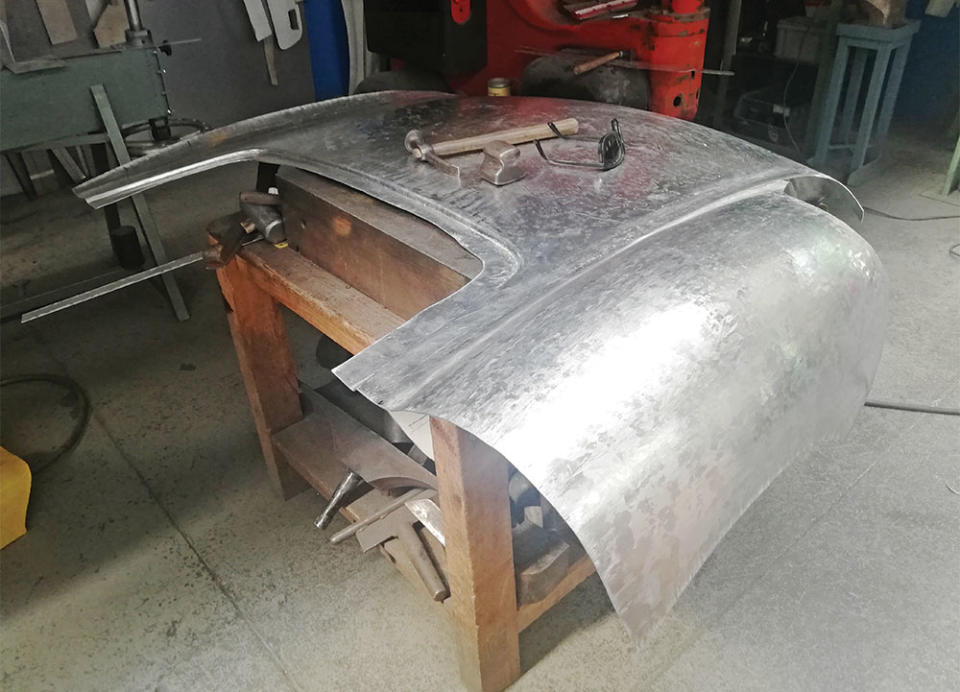
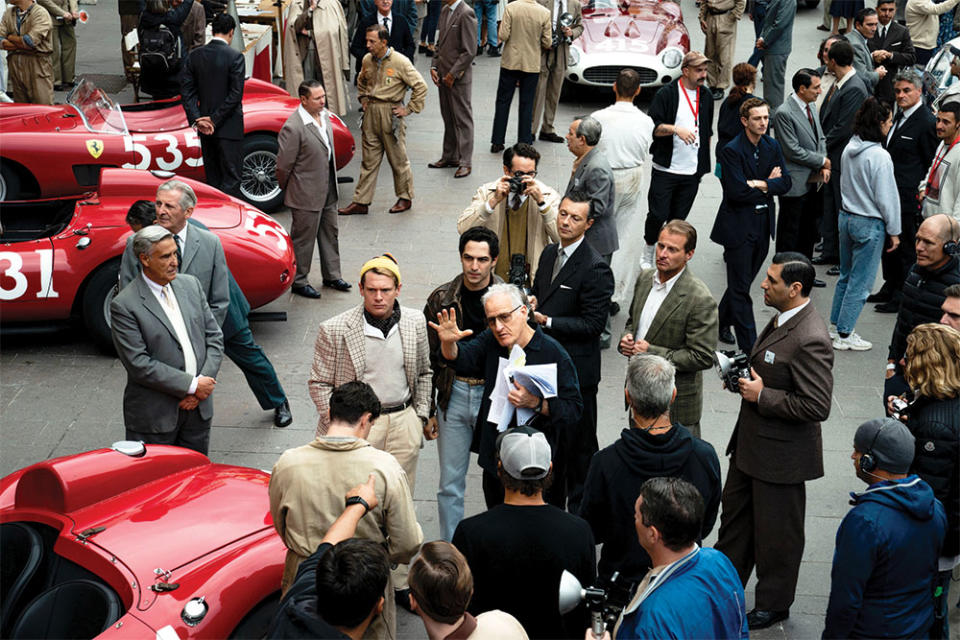
To build the cars, explains Mann: “We located cars we were able to model and do 3D lidar scans from. Then [vehicle supervisor] Neil Layton put it into a [computer-aided design] program and we reverse-engineered building a tubular chassis. Then I determined where I wanted the camera movements ahead of time, and then we built into the tubular chassis these hard mounts so that our rail systems of cameras could go through the skin,” or bodywork.
While the race cars looked like the classics from the 1950s, their exteriors were made from aluminum and fiberglass, and underneath their sinuous shapes were modern race car chassis built from parts supplied by the U.K.’s Caterham Cars. “What was amazing is that these cars worked out of the box when they showed up in Modena,” says the director, referring to the Italian city where Ferrari’s operations are based. “Before they had their bodies on them, we were driving them around. That was quite spectacular. I think Neil Layton is brilliant.”
Most challenging was re-creating the Ferrari 801 given that “the car doesn’t actually exist anymore,” says Layton, whose U.K. firm Auto Action Developments previously worked on the 2021 James Bond feature No Time to Die and was familiar with the challenges of replicating classic cars, having made the Aston Martin DB8s seen in that film. “This was similar to Bond, but for that film, we worked with the OEM,” says Layton. “Obviously Ferrari has given Michael permission to replicate the cars but we had no backup from Ferrari. We had to source all the vehicles — like the 335 and the 315 Ferrari race cars — to work from.”
For Ferrari, Layton produced the running parts for the race cars that would fit under Campana’s bodywork. “For the 801, I purchased a 1/18th scale model toy, scanned it and scaled everything off the size of a wheel spinner,” says Layton. “From there, we created the 3D model and then went about working out what engines, powertrains, transmission and axles we’d use. The 801 was built from drawing board to actually moving in one week.” To pull everything off, says Layton, “The team worked relentlessly on the project, we were putting in 16 hour days, we were doing split shifts and it was continuous for 22 weeks.”
Overseeing the process was Academy Award-winner Robert Nagle, the film’s stunt coordinator, whose long history with Mann dates back more than two decades. “This project was unique and Michael looked to me to oversee and figure out how to build our picture cars. How do we build these cars, how do we make them the best we can — and as authentic as possible — all knowing that we’re just going to run them as hard as we can,” says Nagle. “This was in conjunction with my role as a stunt coordinator to collaborate with Michael on designing the action, along with training the actors he’s going to want to see driving behind the wheel.”
Explains Campana, “It was a very delicate process — the bodywork and the frame were set up in different countries and then we had to match them. We had to assemble the bodywork on the chassis.” Adds Layton, “So for all intents and purposes, they were designing the shoe and we were making the foot.”
Once the cars were created, they were driven hard on set. For Patrick Dempsey, who plays racer Piero Taruffi, working on Ferrari was a labor of love. “This was the best job I’ve ever had in my life, man,” says the actor, who has been racing for the better part of two decades including the Baja 1000 and the iconic French endurance race, the 24 Hours of Le Mans. “Robert Nagle asked me if I wanted to do all the driving in this thing. It was just a dream come true. I got to drive, I ate great food, I was in Italy shooting a period film with Michael Mann.”
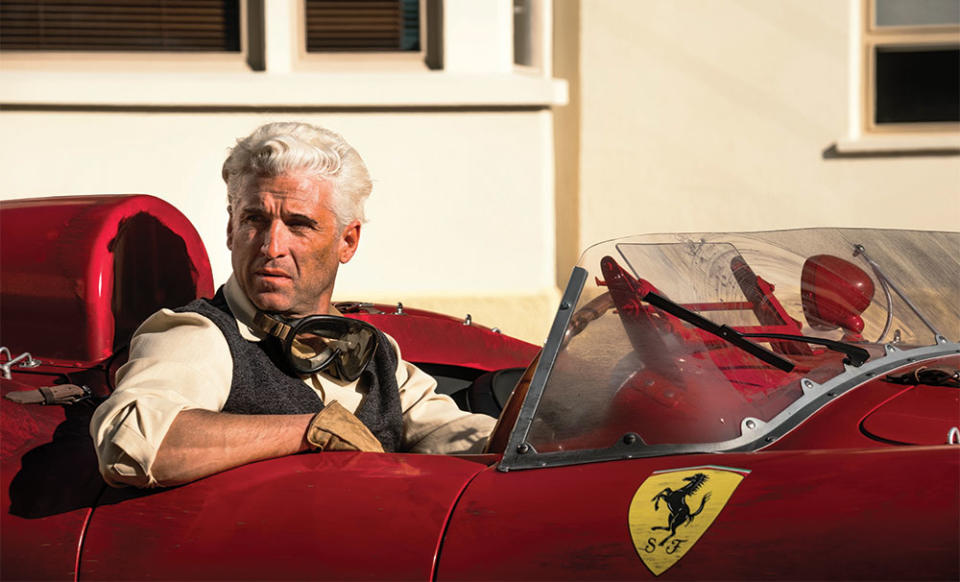
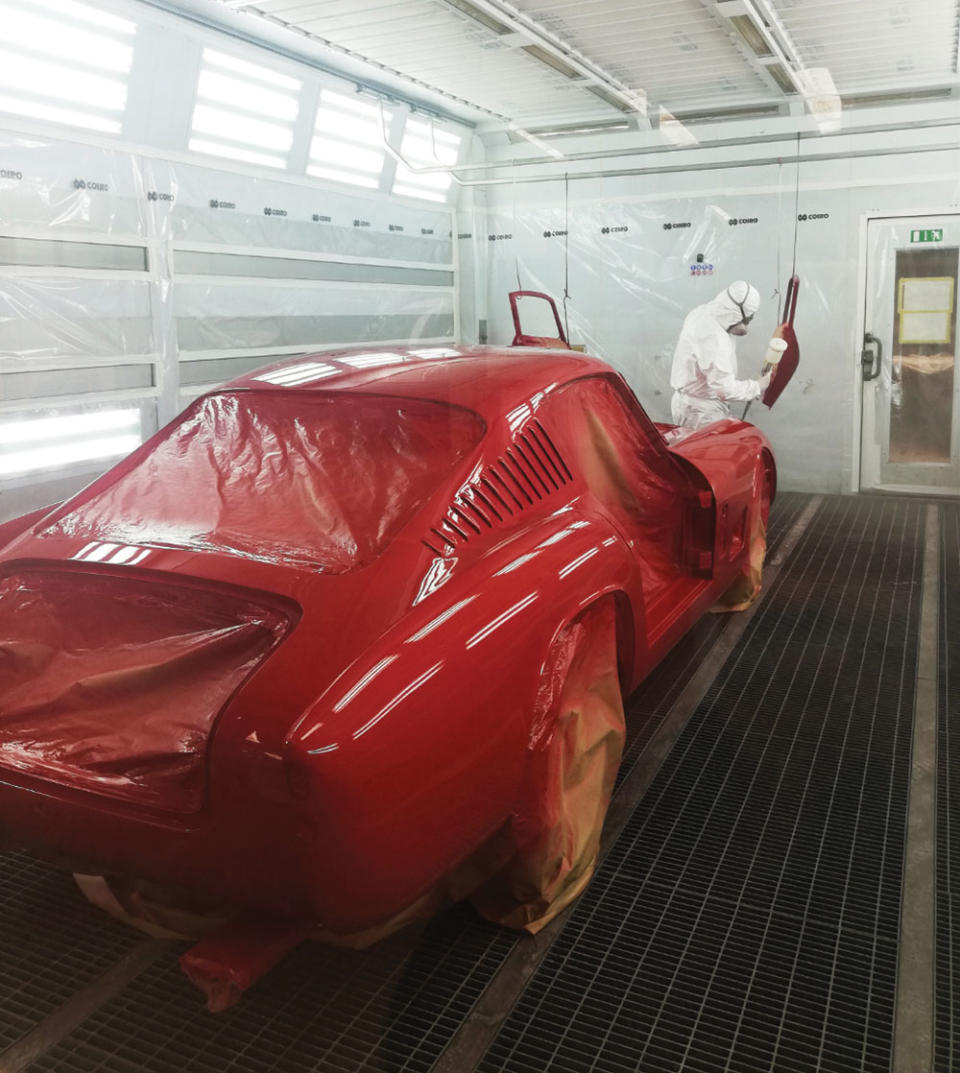
The racing sequence in which the Ferraris and Maseratis zoom across the mountains was a highlight for Dempsey. “That was our last day of shooting and we were going as fast as the cars could. There was just no holding back — you felt like you were really racing now.”
Jokes Mann about Dempsey, “We couldn’t get him out of the car, we needed a can opener to get him out. He drove and drove and drove.”
“Since I’m Italian, I’m proud of that location, I found that location for Michael and he loved it,” adds Mann’s longtime camera operator, Roberto De Angelis. “A lot of what we did that day was practical and handheld, I would sit in the passenger seat and shoot the drivers — especially Patrick, because he’s such a good driver.”
“Everything in the mountains was done in one day. It was a crazy day.” says Mann. “We were working with drones, helicopters, car to car and everything else.”
“When we shot out of the helicopters, we shot handheld to match the language of the cars, it was more rough and real. For Michael, it’s very important for him to be real.” says De Angelis.
When asked how he shot so much demanding footage in one day — scenes of Ferraris and Maseratis smashing against each other as they jockey for the lead, with perilous passes on a narrow mountain road with a steep drop-off into nothingness — Mann replies, “It’s called preparation and knowing what you want. We were choreographing on the passes. For each pass, we’d drive 5 miles and we’d get pieces of three scenes and go back and do it again and again. These cars made real physical contact with each other, too. It was such a fabulous place, the Gran Sasso mountains.”
Mann had a chance to drive the race cars in his film during production, and notes that his own history of racing cars helped him get into the mindset of these 1957-era drivers. “I wouldn’t call myself a race car driver. I’d call myself an amateur race car driver,” the 80-year-old director says. “At a Ferrari Challenge race at Road Atlanta, on a practice day, I did 75 laps in a row. Leading into the back straight, there were three chicanes [S-shaped curves] in a row and I think on maybe one or two laps, I put those together exactly the right way and I just had a ‘This is how it’s supposed to feel’ moment.”
For Mann, who spent more than 30 years bringing Ferrari to the screen, racing is more than a passion. “You and the car have a unity. You’re one. You’re not driving the car — you’re thinking about what’s going to happen. Now, it’s just happened. Now, you’re thinking about the next thing. So it’s kind of a zen, transcendent feeling to that. You’re all one organism, together, as this delicate object is balanced on four springs on the planet Earth and is hurtling with momentum,” he explains. “And, if I could experience something like that once, I could extrapolate and project that experience and then understand the addiction to it. That’s what motivates Enzo, that same addiction to that ecstasy.”
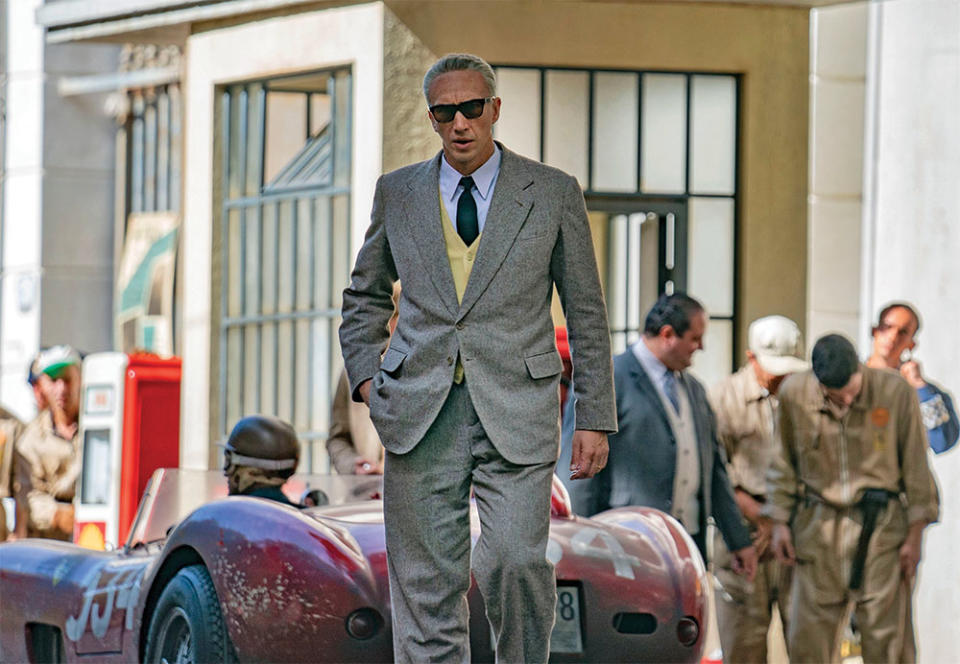
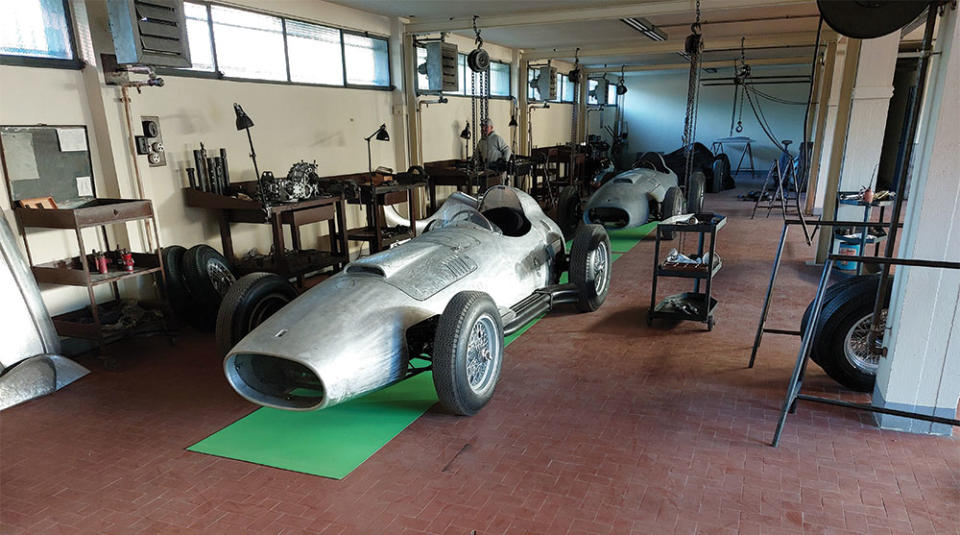
A version of this story first appeared in the Jan. 4 issue of The Hollywood Reporter magazine. Click here to subscribe.
Best of The Hollywood Reporter

